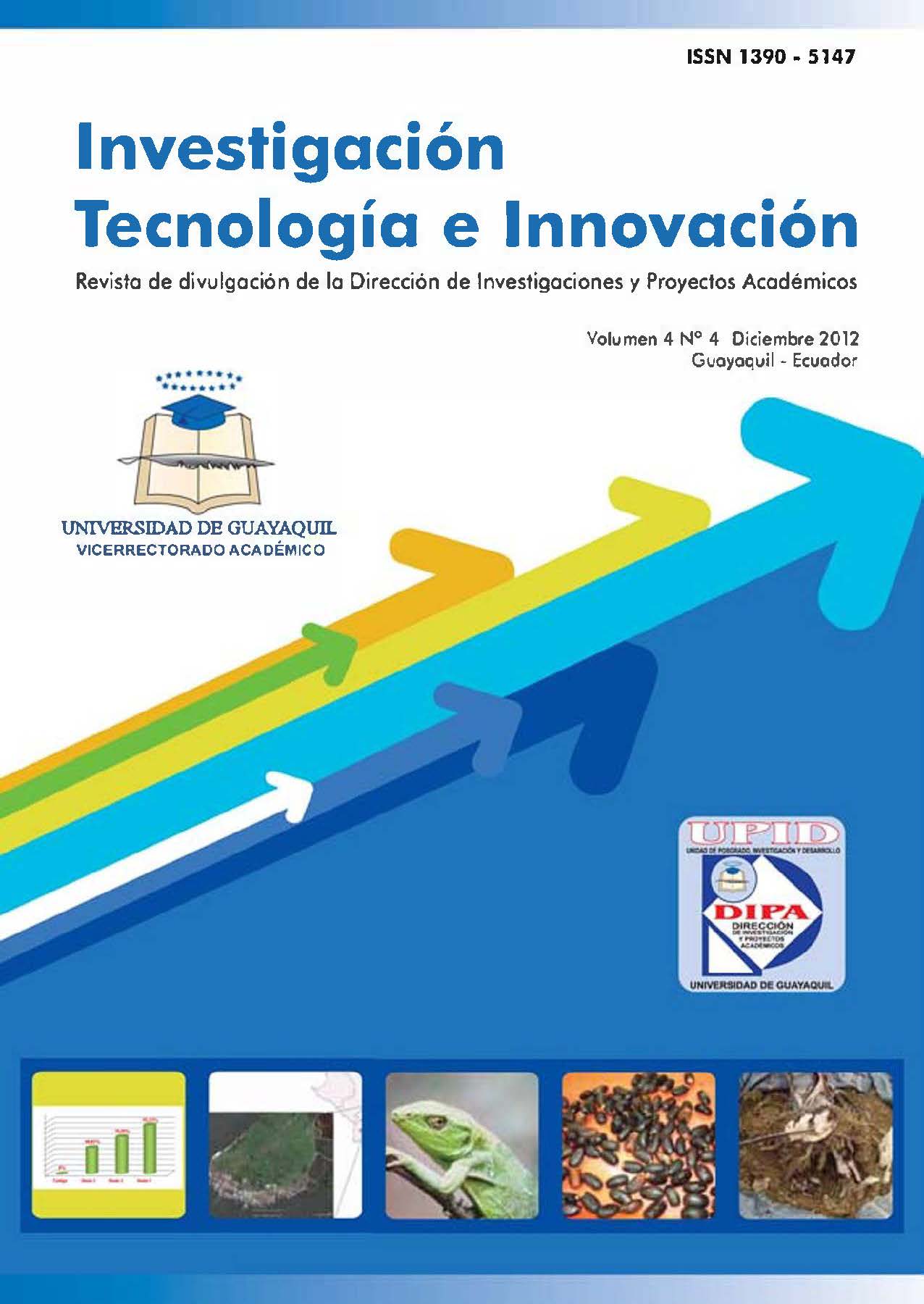Evaluation of soybean lines developed by itav in two production zones in the province of Los Rios.
DOI:
https://doi.org/10.53591/iti.v4i4.100Keywords:
Glycine max L. Merril, yield, breeding, genetic improvementAbstract
The purpose of the research was to evaluate the yield and agronomic behavior of seven soybean lines developed by ITAV in two locations in the province of Los Ríos, in order to obtain a new variety as a planting alternative for farmers in the area. The null hypothesis is that there are no differences between them and, as an alternative hypothesis, that at least one of them is superior. The lines come from a genetic improvement project in which the aim was to find segregants with good production capacity and desirable agronomic characteristics of the plant. The trials were carried out at the "Los Gramales" farm (June-September), located 5 1/2 km from the Puebloviejo - Catarama highway, and in the experimental fields of ITAV in Yinces (June-September), located at Km 1 1/2 of the Vinces-Palestina highway. A randomized block experimental design and nine treatments were used (including two controls INIAP - 308 and Vinces 2), with four replications. The experimental units consisted of four six-meter furrows, separated by 0.60 m between rows, and a population of 250,000 plants/ha. At harvest, the border rows were discarded. Planting was done by hand and all agronomic practices of a commercial crop were carried out. The variables under study were: agronomic characteristics of the plant, yield components, incidence of insect diseases and yields. At the end of the study, it was found that the plant lines were not very good in terms of yield.
References
BRlM, C. l 973. Quantitative Genetics and Breeding. In B. E. Callwell, R. W. Howel, R. W. JUDO, and H. W Johnson (eds.). Soybean: lmprovements, Production and Uses. Amer. Soc. Agron., Madison, Wisconsin. p. l 55-186.
CALERO, E. 2009. El cultivo de soya en el Ecuador. Manual Técnico Divulgativo. Guayaquil, ldeagro. 78 p
CARCELÉN, R y OTROS. 1999. Desarrollo de la nueva variedad de soya Vinces UG 2. Universidad de Guayaquil. Instituto Tecnológico Agropecuario de Vinces. Informe Técnico l - 97. Vinces. p. l-36
GUAMÁN, R. y OTROS. 2003. IN!AP 306, nueva variedad de soya de gran rendimiento para cosecha mecanizada. INIAP, Estación Experimental Boliche. Plegable No l 83. 6p.
INIAP. 2003. INIAP - 307, nueva variedad de soya de gran rendimiento y resistente al acame. IN!AP, Estación experimental Boliche,
Plegable No 212. 6p
INIAP. 2009. INIAP - 308. Nueva variedad de soya de alto rendimiento y de Buena calidad de semilla para el litoral. IN!AP, Estación Experimental del Litoral Sur "Dr. Enrique Ampuero Pareja". INIAP, Yaguachi. Boletín Divulgativo No 364. 7p.
HIMSON, K. y HARTWIG, E. l.982. Soy bean production in the tropics. FAO Plant Production and Protection Paper. Rome. 222p.
Downloads
Published
Issue
Section
License
Copyright (c) 2012 Vicente Painii, Gardenia Gonzales, Eduardo Calero, Jonathan Palma, Benito Olvera

This work is licensed under a Creative Commons Attribution-NonCommercial-NoDerivatives 4.0 International License.






